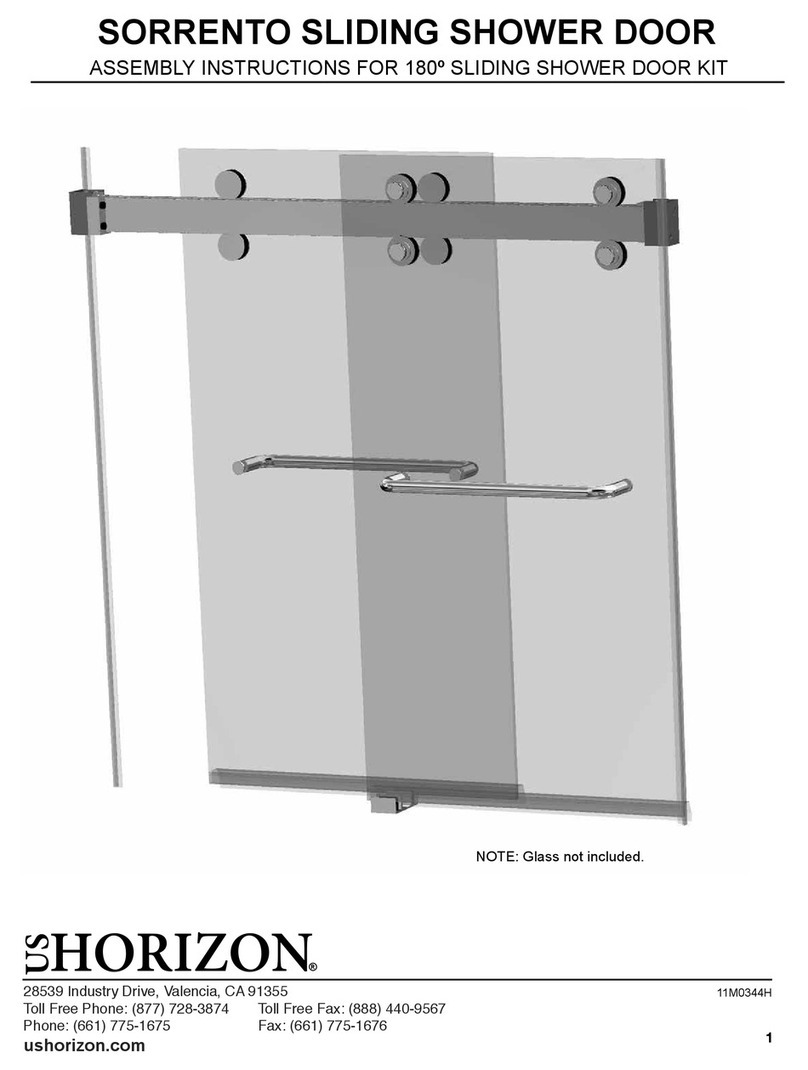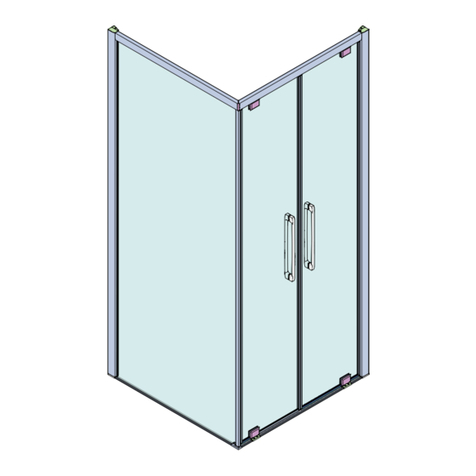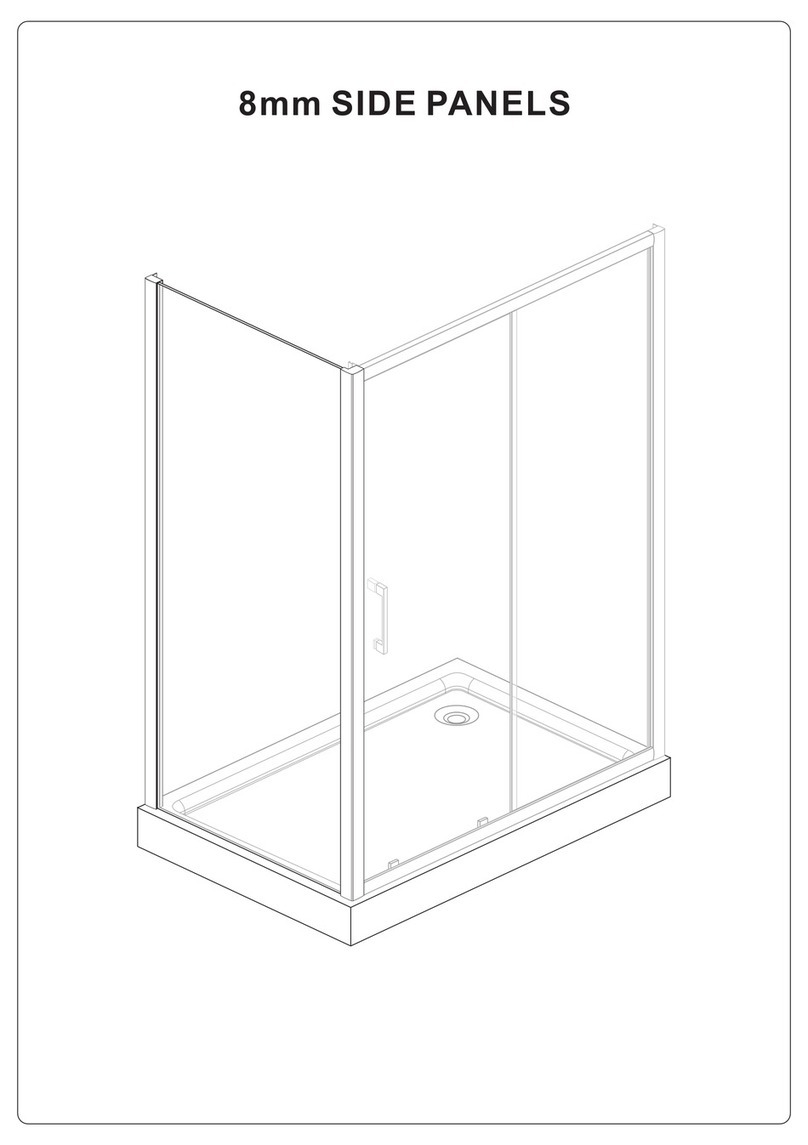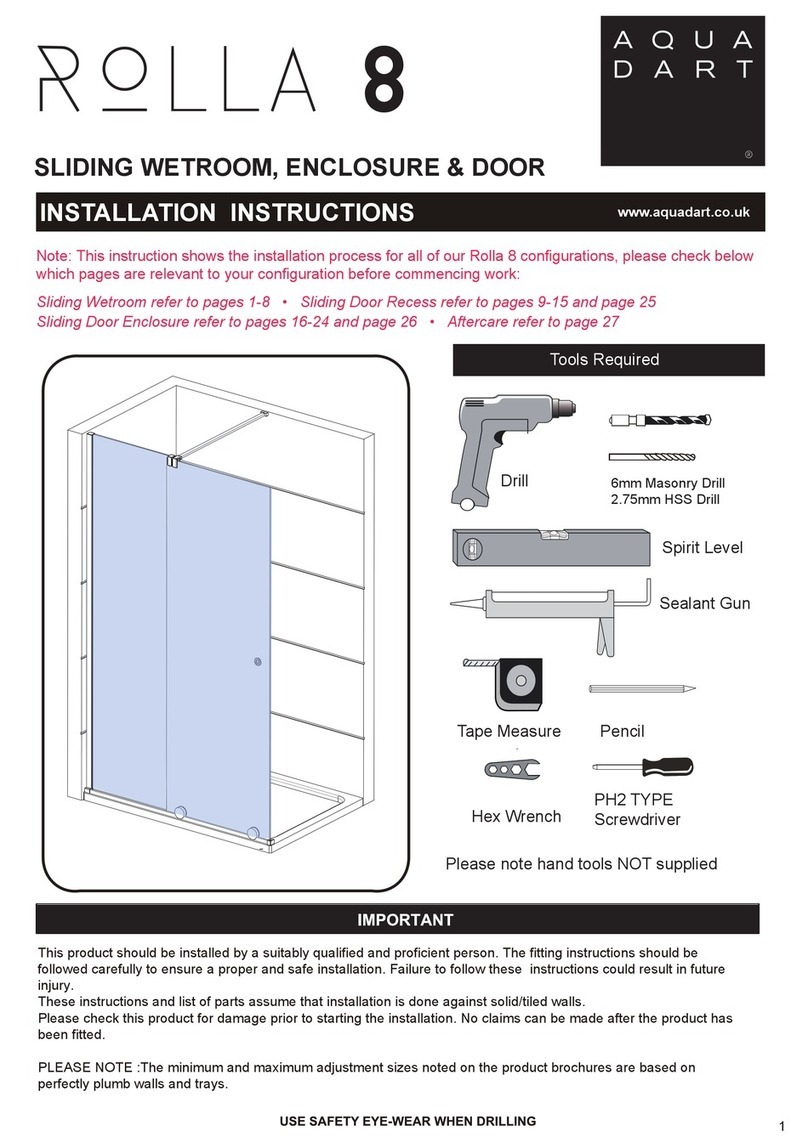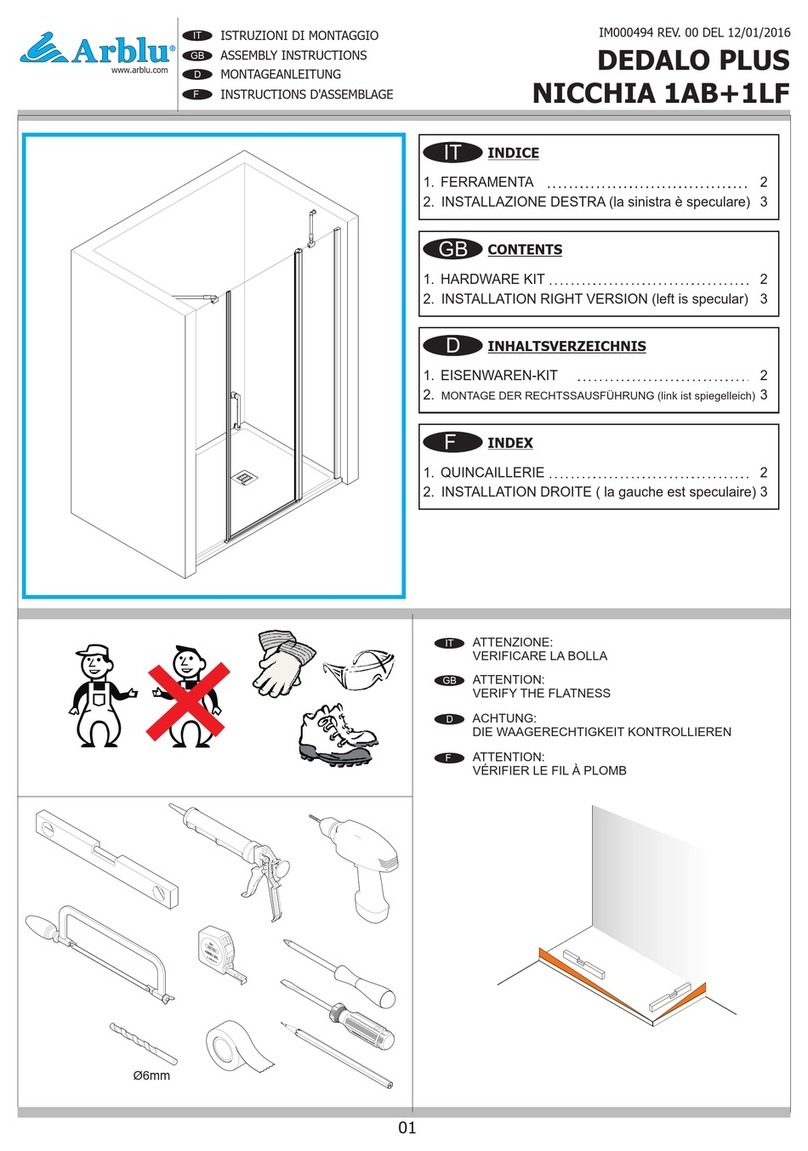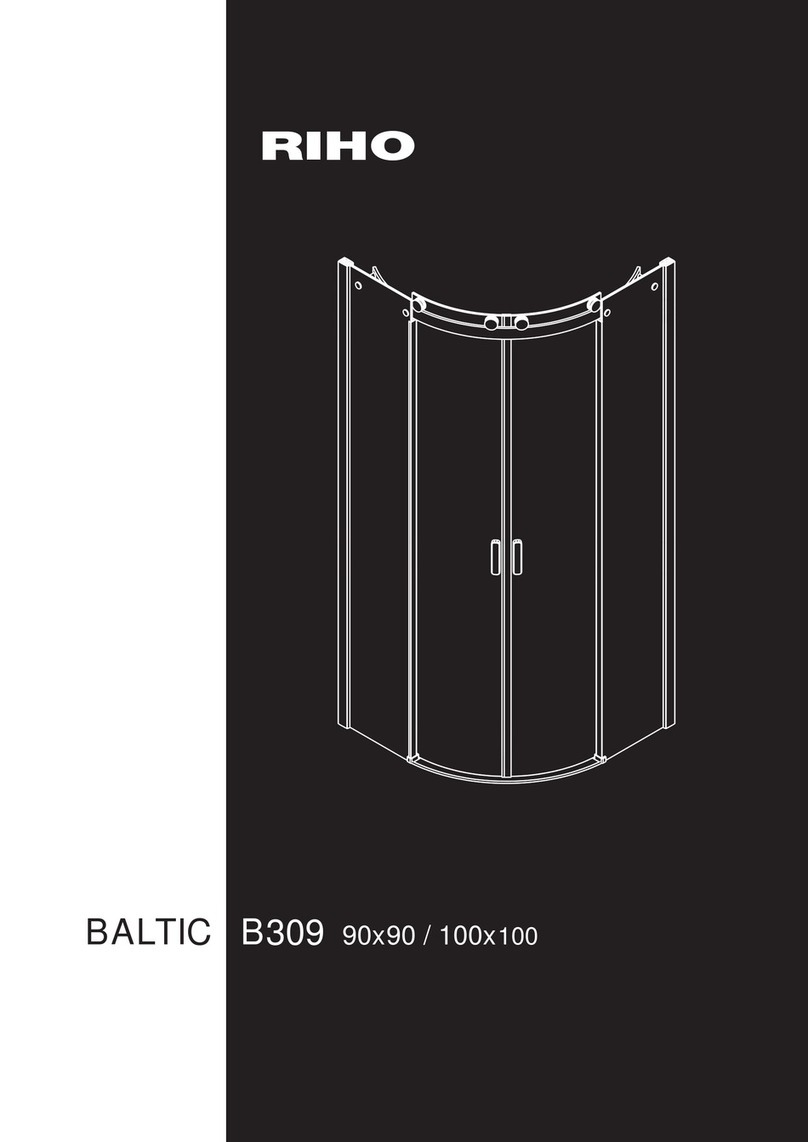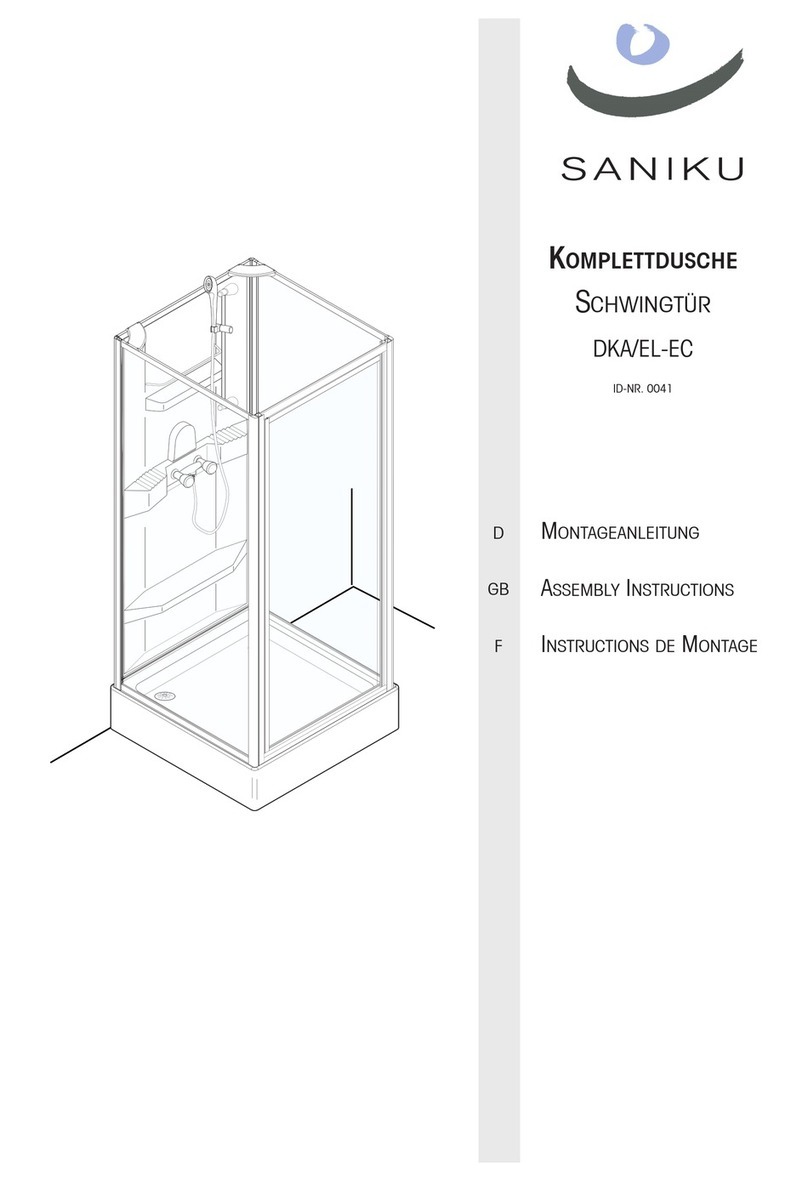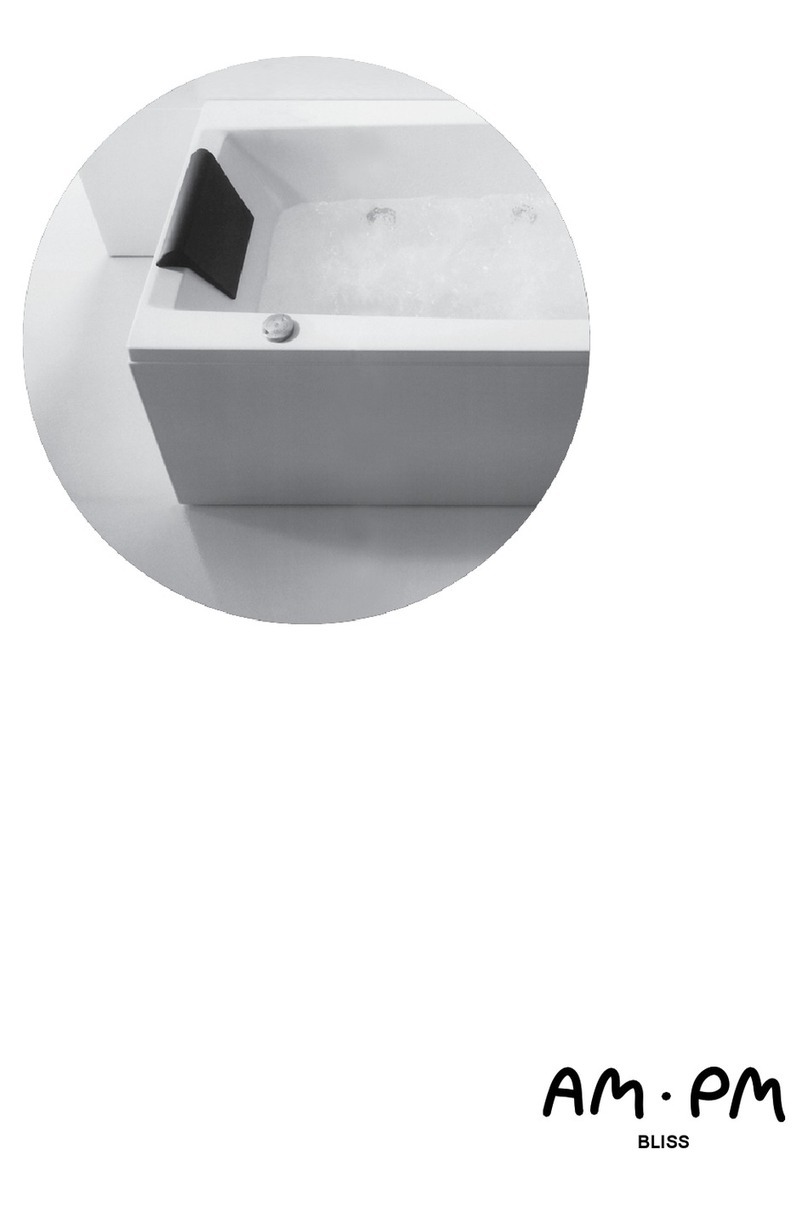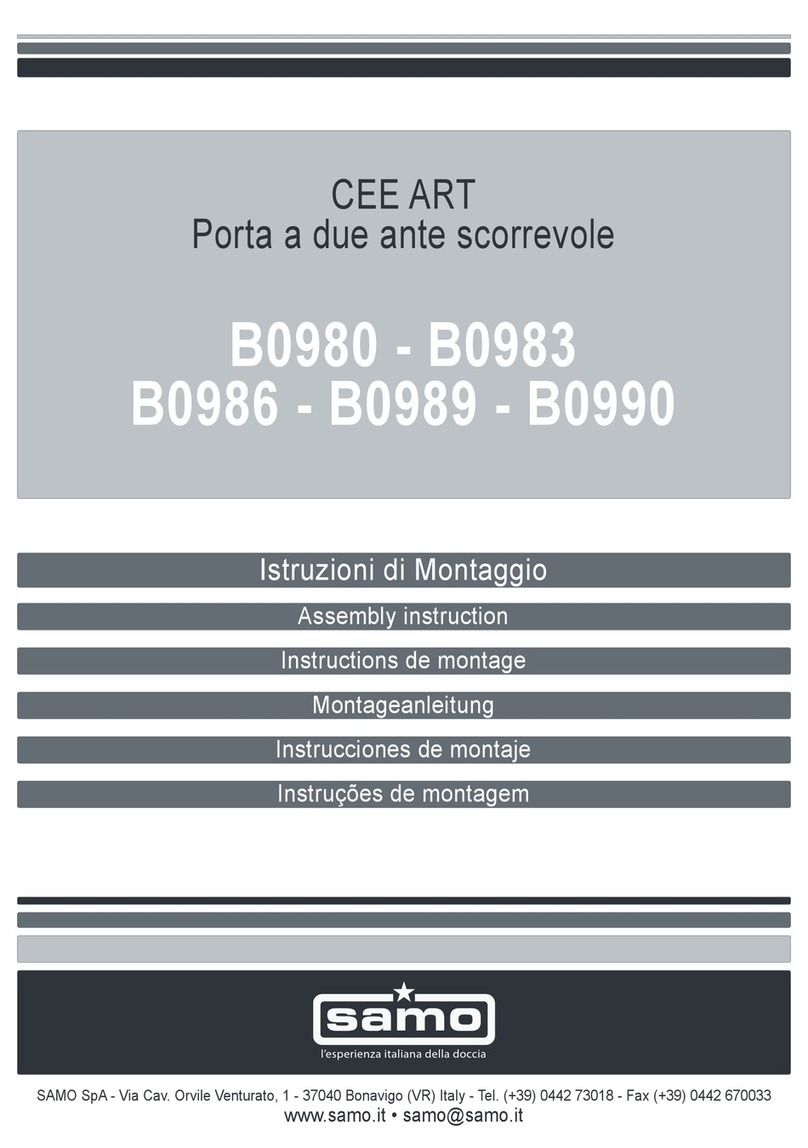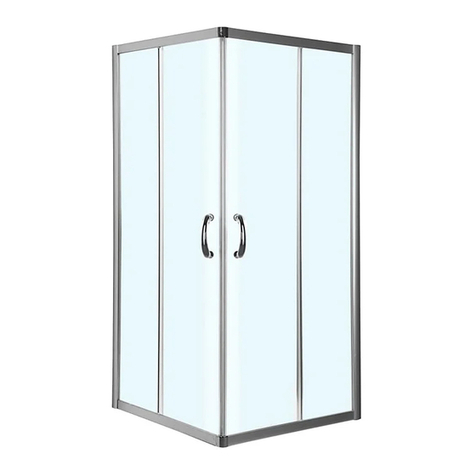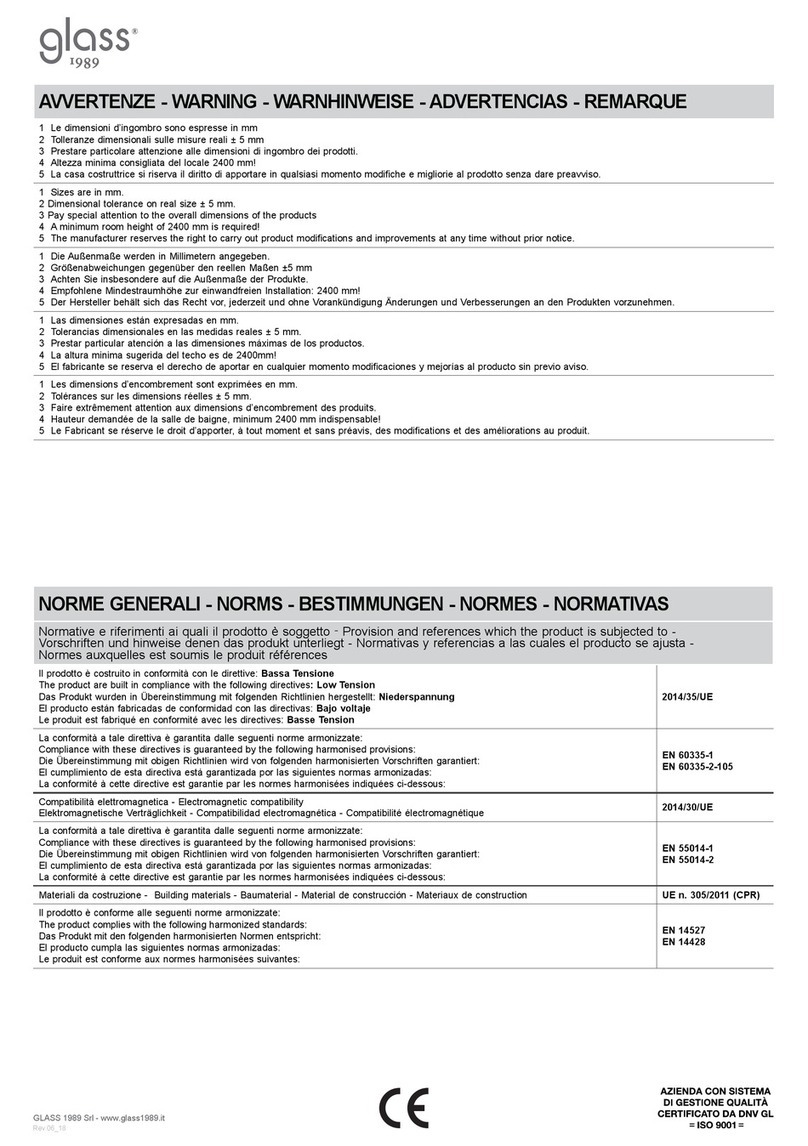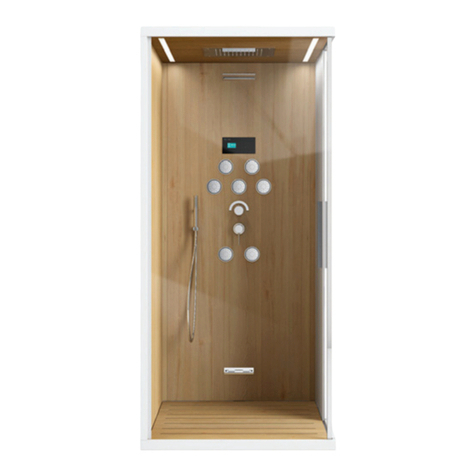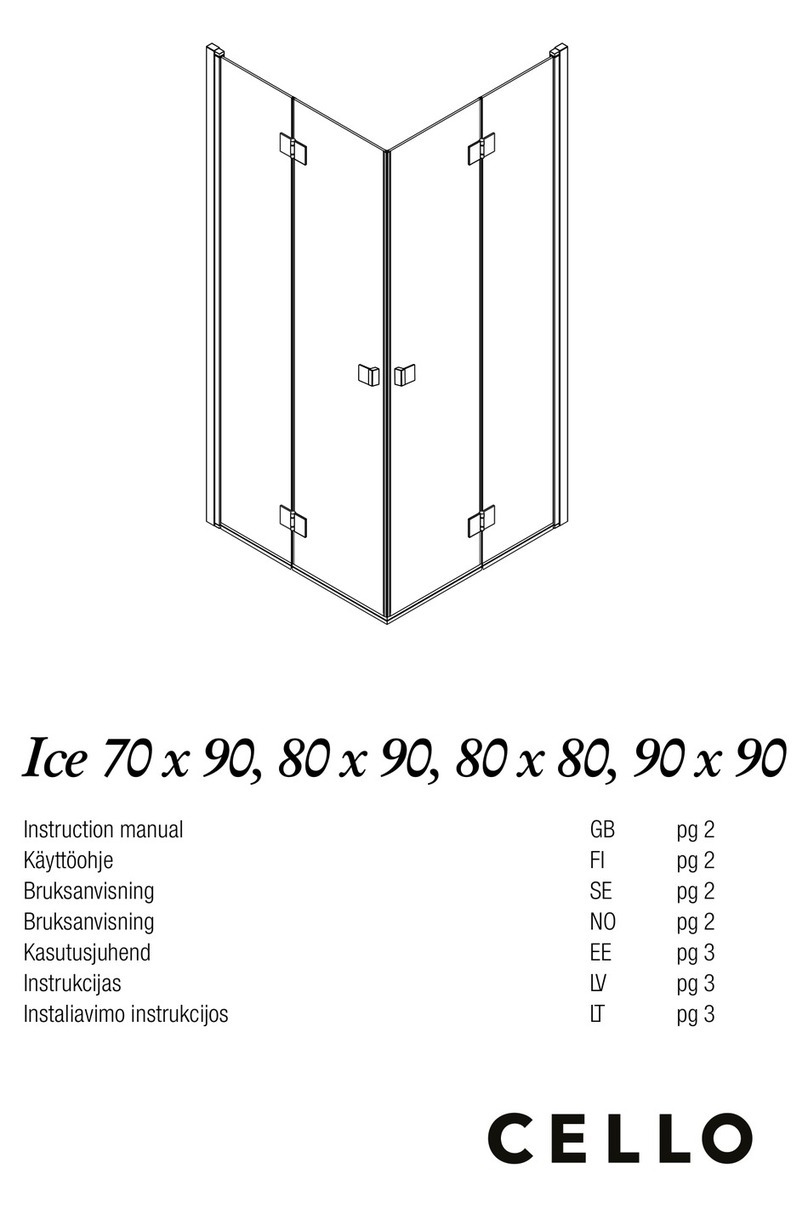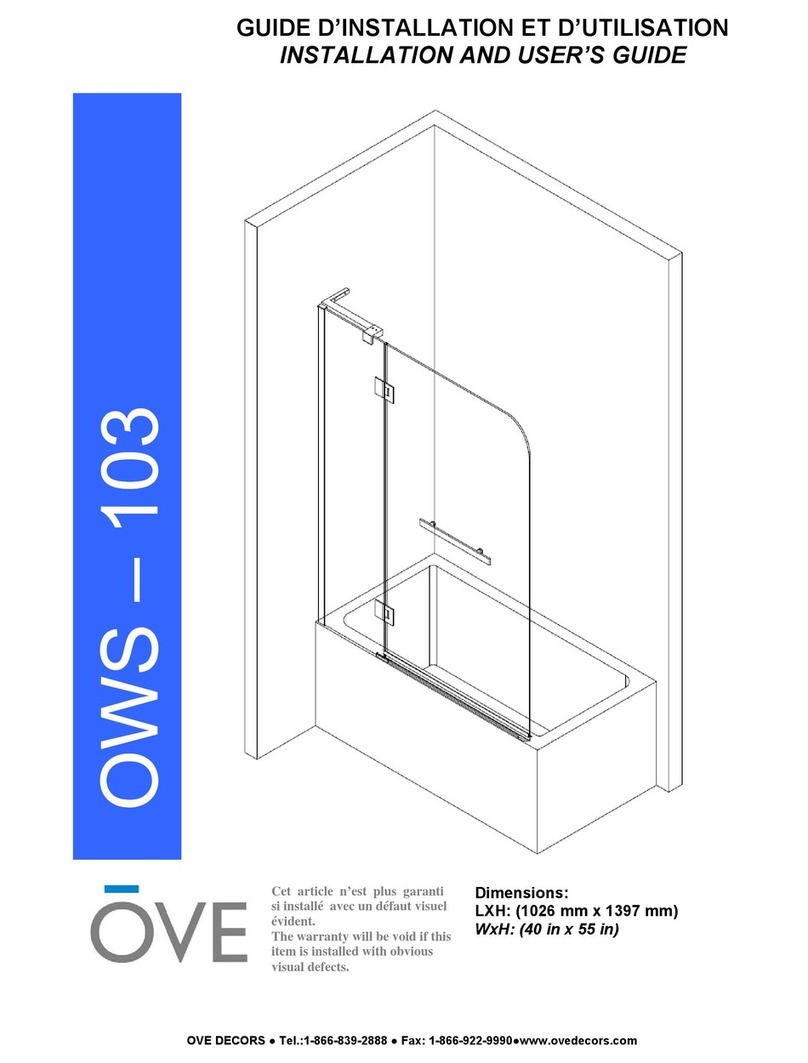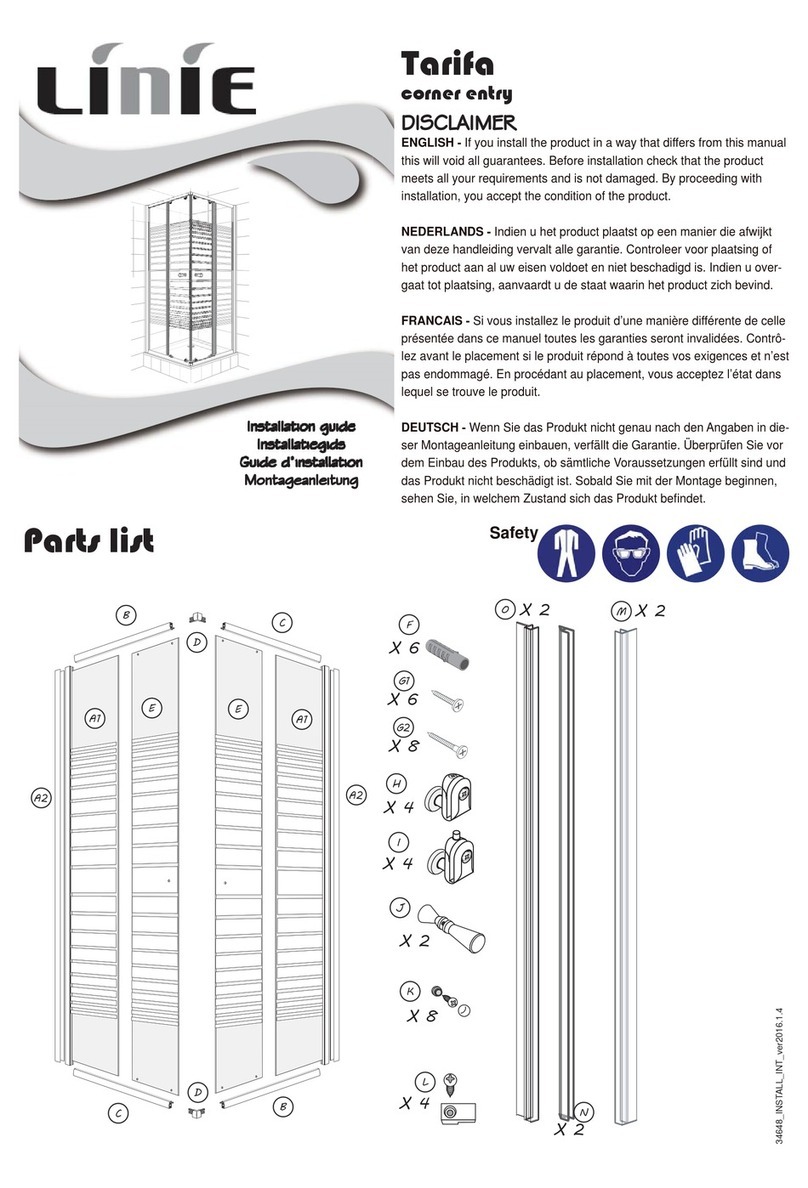
Check contents of the pack before installation. If there is anything missing, contact our Technical Helpline Number for assistance.
The fixings may be spread across several packs - please check the contents of each pack carefully.
Screw
cover cap
2 & 3mm
Allen keys
PN50247
PN4745
PN60162
PN50266
Top cap
Corner
joint cap
Shower
panel foot
Top
panel
bracket
Plastic
threshold
strip
PN80501
PN80500
*PN10785
2
2
1/2
1
1
1/2
2
0
2
1
0
1
32mm
Screw
Tie bar
bracket
PN8212
PN8203
PN80499
PN40166
PN60210
Wall plug
Tie bar
bracket
Washer
2
2
0
0
2
5
5
4
0
1
10
10
8
2
4
5
5
4
1
1
OPTIONS: 54
23
OPTIONS: 542 3 OPTIONS:
1 1 1
1
0
1
1
0
5
5
4
PN40177
Aluminium
threshold
strip
1
1
5
4
5
6
PN80506
Seal
02422 2
*1
*1
0
Note: The quantities of the threshold
strips will depend on size of panels.
*Optional Extras, not included in pack.
6
Note: The *Spacer Plate PN80573 50
is only included with option 6.
Note: The *Spacer Plate PN80583 is
only included with option 6.
AQUA SCREEN PURE
PAGE 1
71399 00 / Issue 11 / 16
TECHNICAL HELPLINE: 01460 258682
542 3
2
2/4
0
1/1
1
1/2
1
1/1
0
2
2
1/1
0
1
1
1/1
1
1
0
1/1
1/2
1
0
1/1
6
Please read these instructions carefully and keep for future reference.
Incorrect fitting will invalidate the guarantee.
SAFETY
● Handle glass with care. Although the glass is very tough, sharp impacts can damage
both the glass and metal frame.
●Do not remove the plastic corner protectors from the glass panels until the panels
are about to be fitted.
● As the parts are large, we recommend that two people are needed to carry out parts
of the installation.
● Make sure there are no hidden pipes or cables in the floor and walls where you
intend to drill.
● Wear safety goggles, shoes and appropriate clothing.
BEFORE INSTALLATION
● The panel/s will not sit correctly on an uneven surface. If uneven, the wall
channels may not fit.
● Note: If not fitted on a tray, ensure panel/s are fitted to a tiled or waterproof
composite floor.
● The panel/s should be fitted on tiled walls which are sealed with waterproof grout.
● Always check very carefully that components are vertical.
EQUIPMENT NEEDED:
Drill, 4mm & 6mm Masonry Bits, Crosshead Screwdriver, Flatblade Screwdriver (small &
medium), Spirit Level, Pencil, Fine Tooth Saw, Silicone Sealant, Scissors, Masking Tape,
Tape Measure.
Note: The screws and wall plugs supplied are for masonry walls. For lightweight walls
i.e. stud partitions, plasterboard etc, use the correct type of fixings.
OPTION 1 - PAGES 2 - 4 OPTION 4 - PAGES 9 - 13OPTION 3 - PAGES 5 - 8OPTION 2 - PAGES 5 - 7 OPTION 5 - PAGES 14 - 17 OPTION 6 - PAGES 18 - 20
OR
*
*
